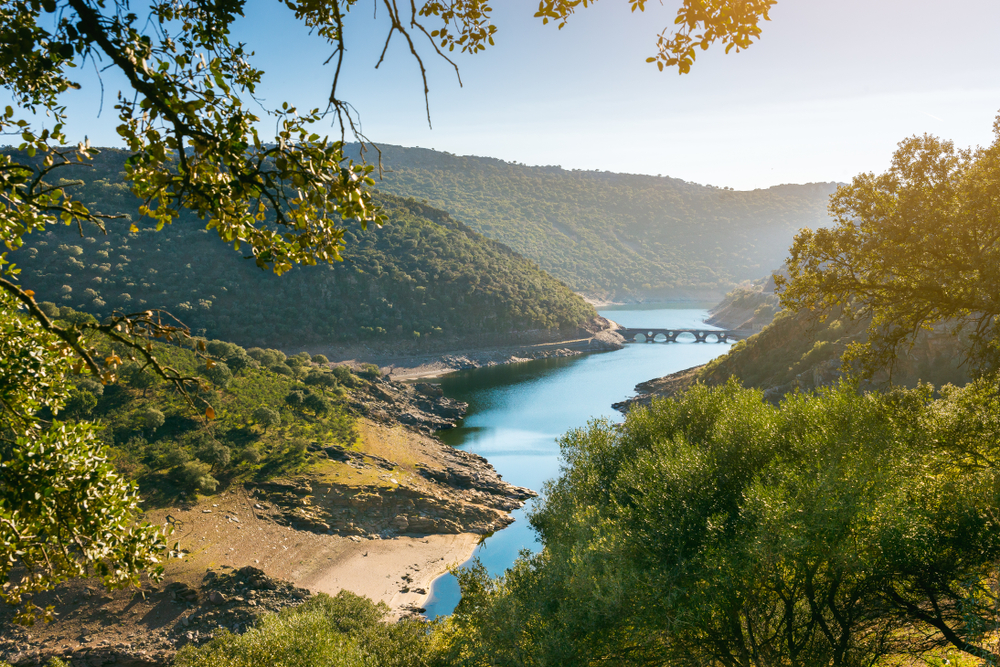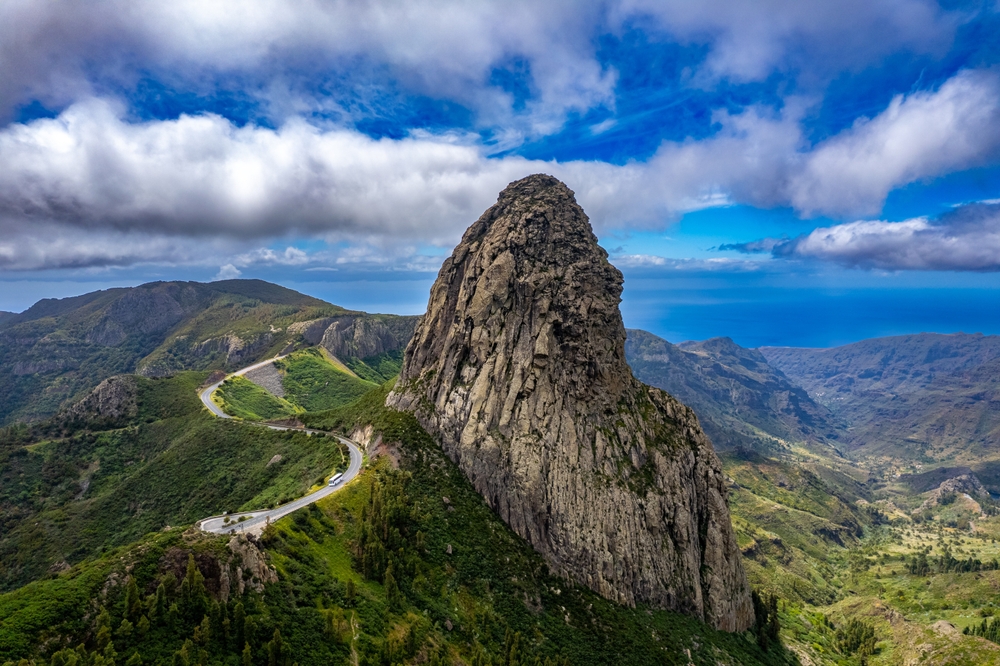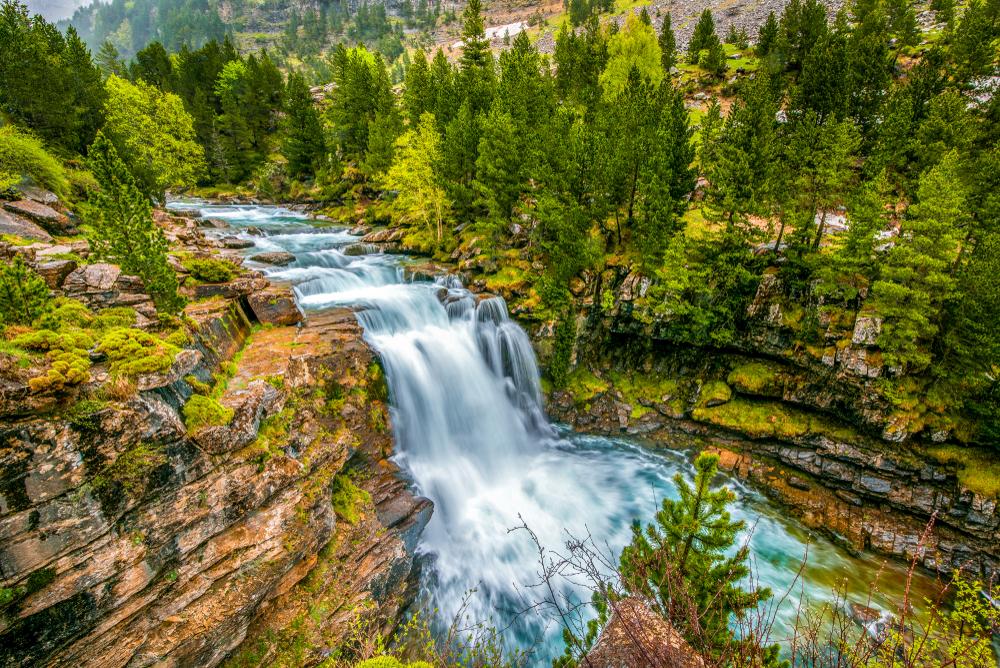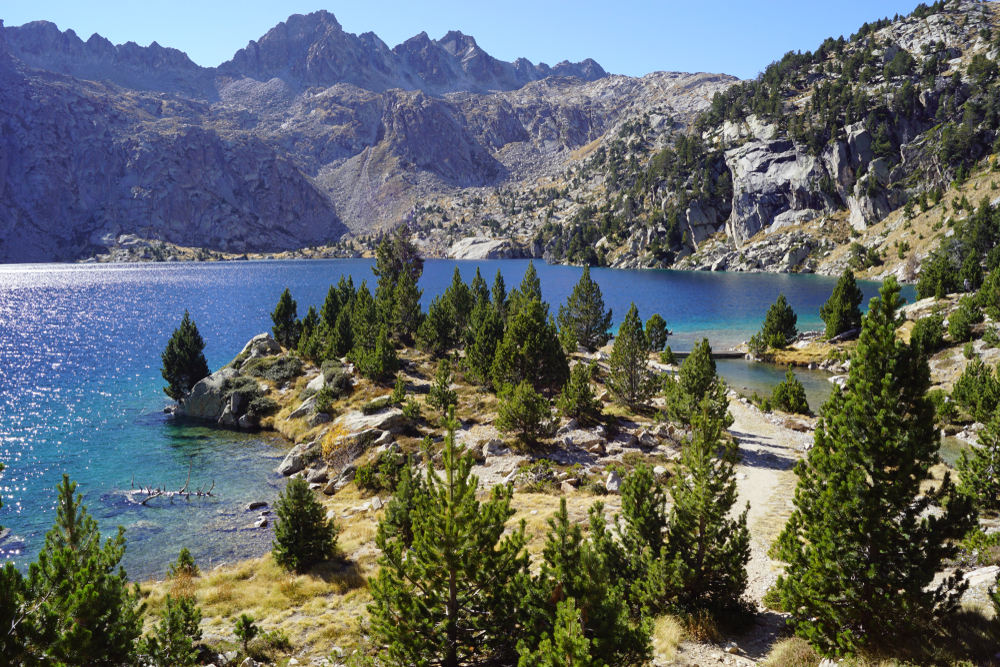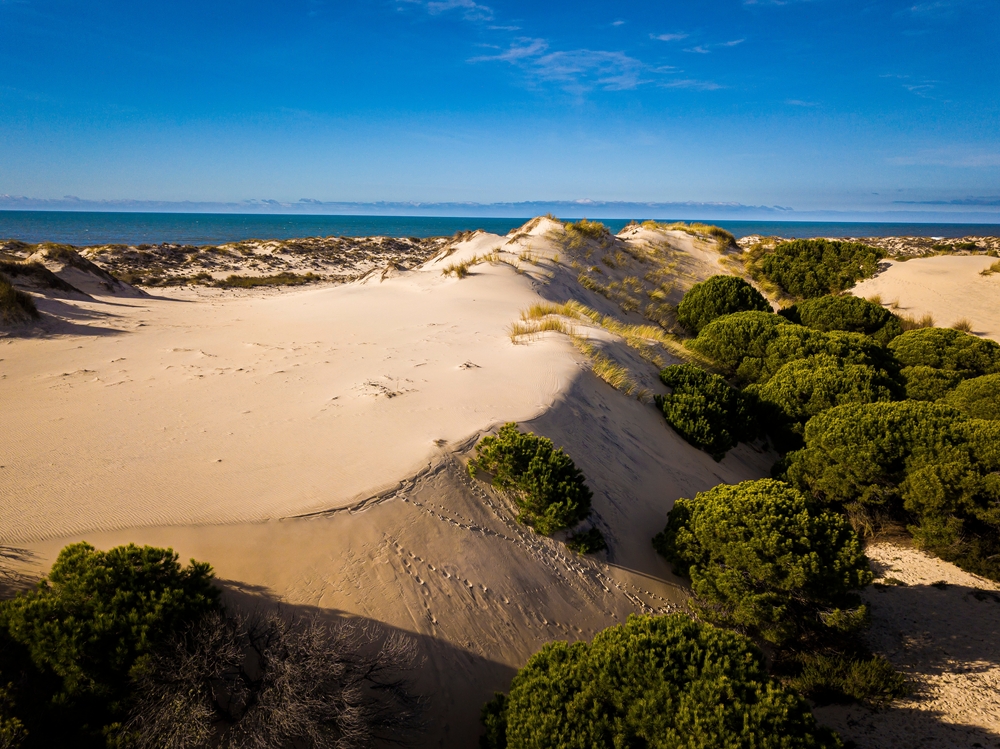Monfrague Overview
Monfragüe National Park, known locally as Parque Nacional de Monfragüe, is a striking natural sanctuary located in the province of Cáceres, in the Extremadura region of western Spain.
Covering an area of approximately 68 square miles (180 square kilometers), the park is a haven for biodiversity and is widely regarded as one of the most important protected areas in the Iberian Peninsula. It lies between the Tagus and Tiétar rivers, where dramatic cliffs, rolling hills, and dense Mediterranean forests create a landscape of remarkable beauty and ecological significance.
The terrain of Monfragüe National Park is dominated by rugged quartzite ridges, deep gorges, and extensive dehesa woodlands, a characteristic Iberian savanna-like ecosystem composed of holm oaks, cork oaks, and wild olive trees. The park’s most famous landmark is the Castillo de Monfragüe, an ancient castle perched atop a rocky hill, providing panoramic views of the surrounding landscape.
The Salto del Gitano, or “Gypsy’s Leap,” is another dramatic rock formation and one of the best places for birdwatching in all of Spain. The Tiétar and Tagus rivers cut through the park, creating wetlands that support a rich array of flora and fauna.
Wildlife enthusiasts visiting Monfragüe will be treated to an extraordinary display of birdlife. The park is a premier destination for birdwatching, with one of the largest and most significant colonies of Eurasian black vultures in the world. It is also home to Spanish imperial eagles, griffon vultures, Bonelli’s eagles, and black storks. The cliffs and forests provide ideal nesting grounds for these birds, making Monfragüe one of Europe’s top spots for raptor observation.
In addition to birds, the park shelters an impressive array of mammals, including Iberian lynxes, wild boars, red deer, and otters that thrive in the riverbanks and dense woodlands.
Among Monfragüe’s most popular attractions is its extensive network of well-marked hiking trails, which allow visitors to explore the park’s diverse landscapes. The Castillo de Monfragüe offers a historical and scenic highlight, while viewpoints like Mirador del Salto del Gitano provide incredible opportunities for birdwatching.
Visitors often engage in photography, wildlife observation, and guided tours, which provide insights into the park’s ecology and conservation efforts. The park also hosts the annual Monfragüe Birdwatching Fair, attracting nature lovers and ornithologists from around the world.
Conservation efforts in Monfragüe have been highly successful, particularly in protecting threatened raptor species and restoring degraded landscapes. Declared a national park in 2007, Monfragüe has been recognized as a UNESCO Biosphere Reserve, ensuring long-term preservation of its ecosystems.
However, challenges such as climate change, habitat fragmentation, and the impact of tourism require continuous management and environmental policies. Local authorities and conservation organizations work together to balance ecological protection with sustainable visitor experiences, ensuring that Monfragüe remains a sanctuary for wildlife and a treasured destination for nature enthusiasts.








































































